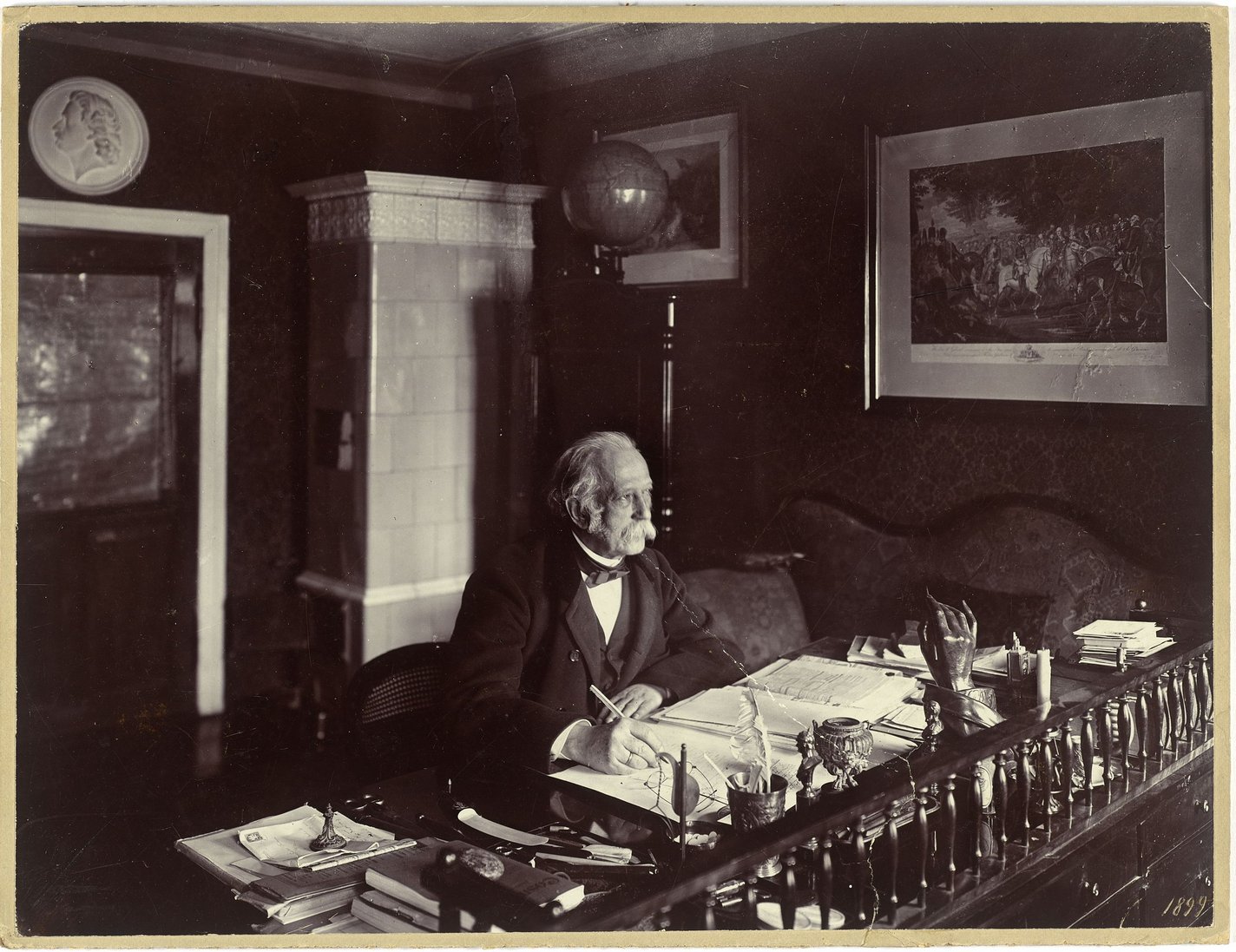Fontane’s Media (1819–2019)
International Congress, the 13th to the 16th of June, 2019
The University of Potsdam hosted an international congress as a highlight of the academic program in the Fontane Year fontane.200, organized by the Fontane Archive. Literary and media scientist from Germany, Austria, Switzerland, England, Sweden, Russia, and the USA gathered at the University of Potsdam’s Am Neuen Palais campus in June 2019 for more than fifty lectures and presentations. The academic event was accompanied by keynote speeches, evening events, and a cultural program in summery Potsdam.
Fontane: Working with media
Theodor Fontane worked with different types of media in a thoroughly modern way: During his multi-year stay as a press agent in London he acquainted himself with the most innovative press landscape of his time; as an editor in Berlin, he performed journalistic drudgery; he wrote reviews of theater productions, the visual arts and literature. In all of this, he knew exactly how to format his texts for a target audience und how to locate his themes, a »project existence […] which sought to monetize artistic and linguistic capabilities in a rapidly changing media landscape« (Iwan-Michelangelo D’Aprile).
Further Information
The Congress was supported by the »Ministerium für Wissenschaft, Forschung und Kultur des Landes Brandenburg« as well as the University of Potsdam in the framework of the Fontane Year (fontane.200).
 Image: TFA
Image: TFAHis numerous correspondences, in which he captivatingly found the tone and stylistic sleight of hand with which he could win over his counterpart, attest that Fontane was also one of the most productive and creative letter writers of the 19th century. His novels and the Wanderungen are also decidedly products of media: composed initially for magazines and newspapers in which the texts often appeared serially, they were released only subsequently as books by various publishers. What follows from Fontane’s equally comprehensive and productive embeddedness in the medial environment of his times? What publishing strategies can be delineated? Which interactions between journalists and novelist can be detected? Which traces did the media system of the 19th century, shaped by new media such as photography and telegraphy, leave in his works? What poetic energy do the different types of media unfold in Fontane’s literary writings, in his letters, in his war reports, in his ballads or in his (travel) feuilletons?
Regarded today as ›classic‹, the novelist, travel und landscape writer should in no way be dismissed in the question of Fontane’s Media. Rather, it is precisely a matter of drawing attention to the fact that in these roles—as well as in their respective texts—, Fontane reports, narrates and versifies in the ecological media situation of the 19th century. The equally swift and comprehensive medialization and networking of society in the course of the 19th century are to be grasped as productive prerequisites of Fontane’s authorial occupations. He was embedded in a highly branched net of correspondence and postal text circulation and acquainted with the routines and audiences of the popular periodical press, for which he wrote his entire life. He was also shaped in manifold ways by the visual culture of his time, and for all these reasons, Fontane has come to be recognized equally as a journalistically versed and aesthetically sensitive crossover artist.
 Image: TFA
Image: TFAThe congress also discussed which roles media play in the reception and trajectory of the cultural representation of Fontane and his time. In this context, one must not only consider that »most forms and institutions of such representations […] are themselves inventions of the 19th century« (Jürgen Osterhammel): from the author archive and the scientific edition, to literary societies right up to photography and film. We should als ask how cultural and scientific memory assert themselves in the procession of digital media transformations. How does a culture preserve its ›classical‹ heritage in an environment of permanent updates and fragmentation? In which medias do we encounter Fontane’s texts?
A look at the scientific program
Over 50 lectures in more than 20 sections built the congresses main academic program. It was opened on Thursday afternoon, the 13th of June 2019, with a ceremonial event. The literary and media scientist Rolf Parr held the opening lecture with the title: Theodor Fontane: Kommunizieren, Produzieren und Publizieren in vernetzten Medien.
A look at the social program
A comprehensive social program accompanied the congress. There were, among other things, two evening events with prominent guests.
Friday, June 14th 2019
»Ein sehr guter Stoff«. Fontane biographies
A panel conversation at the »Potsdamer Stadt- und Landesbibliothek« with the Fontane biographers Iwan-Michelangelo D’Aprile, Regina Dieterle and Hans Dieter Zimmermann who inquired about the strategies and ways of approaching Fontane biographically—and discussed the biography as a popular medium of reception of the ›classics‹.
Saturday, June 15th 2019
»Besser als feuilletonistisches Gequassel«. About the media praxis of taking notes
A reading and conversation with the writer Kathrin Röggla and the Georg-Büchner-Preis winner Marcel Breyer centered on the art of note taking: how do writers and journalists actually take notes today? How do they handle notes, and what is made of them? And can one actually read notes aloud?
Numerous further events and presentations accompanied the congress: a poster exhibition; a contentious BarCamp organized by the students of the Faculty of Arts at the University of Potsdam, which debated Fontane from an interdisciplinary perspective; workshops for teachers; and a forum ›young Fontane-Researchers‹, in which junior scientist reported on their research plans. It was possible to visit the Fontane Exhibition »fontane.200/Brandenburg—Bilder und Geschichten« in the »Haus der Brandenburgisch-Preußischen Geschichte« in Potsdam or the main exhibition »fontane.200/Autor« in the »Neuruppin Museum«.
Contact person
Peer Trilcke
Chair of the Programme Comittee
Tel:
+49 331 20139-6


